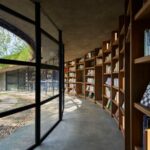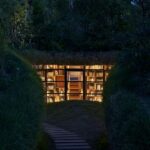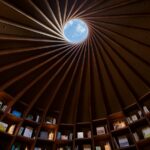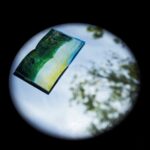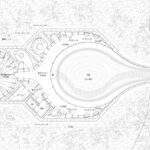Library in the Earth: A Sanctuary for Farmers
Introduction
Nestled within the serene landscapes of KURKKU FIELDS in Kisarazu, Japan, the Library in the Earth stands as a testament to harmonious coexistence between architecture and nature. Designed by Hiroshi Nakamura & NAP, this 113 m² sanctuary serves as a haven for farmers, offering respite amidst their daily toils.
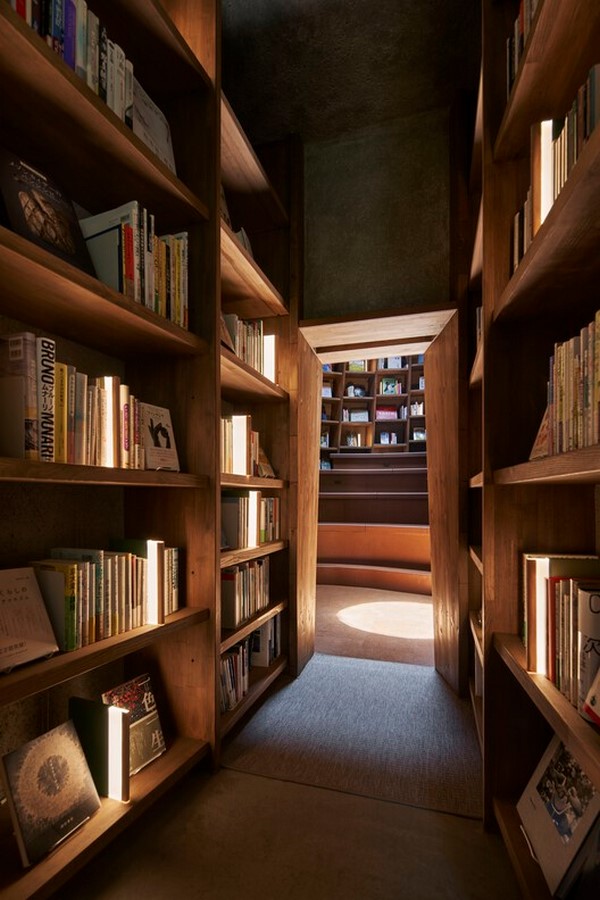
Concept and Location
Situated in a corner of the agricultural production corporation’s fields, the Library in the Earth emerges as a tribute to the symbiotic relationship between farmers and nature. Built atop a valley filled with construction debris, the site was transformed into a tranquil oasis, blending seamlessly with the surrounding lush vegetation.

Design Philosophy
Embracing the belief that architecture should coexist humbly with the natural world, the design aimed to minimize disruption to the cultivated soil layer. The structure, resembling a water drop when viewed from above, delicately merges with the landscape. Architectural elements are minimized, with concrete void slabs cantilevering from the outer retaining walls. The interior, finished with earthen materials, exudes a sense of warmth and tranquility.
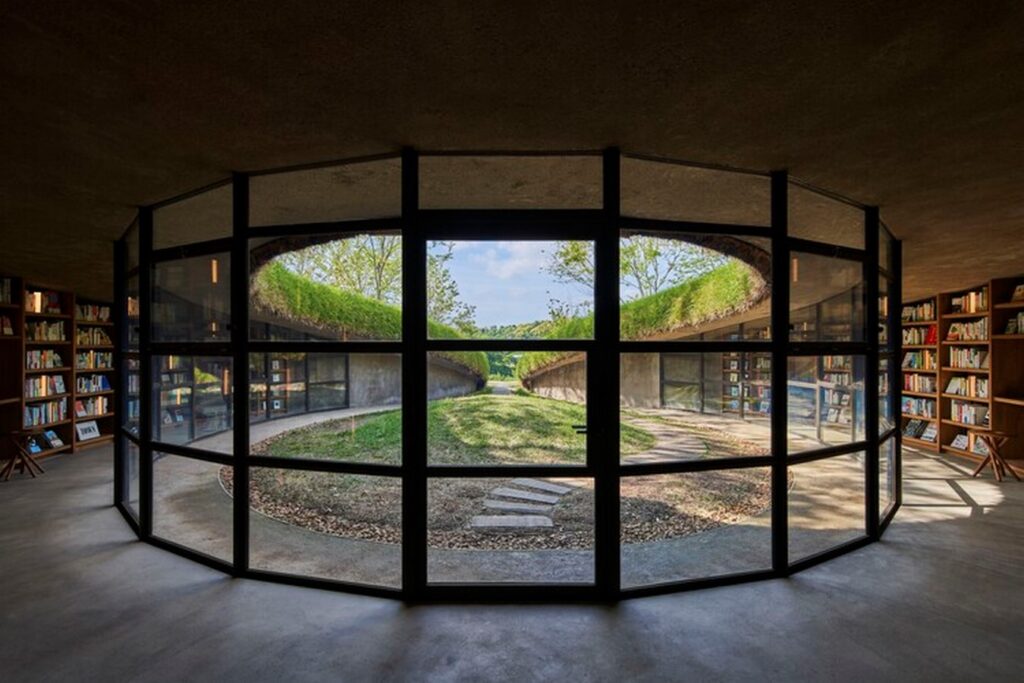
Spatial Experience
Upon entering the library, visitors are greeted by a corridor of bookshelves, seamlessly integrated into the surrounding environment. The interior features varying ceiling heights, creating intimate spaces for reflection and storytelling. Stepped seats surrounded by bookshelves offer a cozy retreat, while natural light floods the space, illuminating the agricultural community’s collective spirit.

Symbolism and Community
The Library in the Earth symbolizes more than just a physical structure; it embodies the interconnectedness of humanity and the environment. Through a system of reciprocal support, the structure fosters a sense of community, where individuals come together to celebrate the richness of the earth and its bounty. At its heart, the library frames a view of the sky and clouds, reminding visitors of the boundless beauty of the natural world.
Conclusion
As a sanctuary for farmers and a celebration of nature’s abundance, the Library in the Earth stands as a testament to the power of architecture to uplift the human spirit. By seamlessly blending with its surroundings and embracing the principles of sustainability and community, this architectural marvel offers a glimpse into a harmonious future where humanity and nature thrive in harmony.

